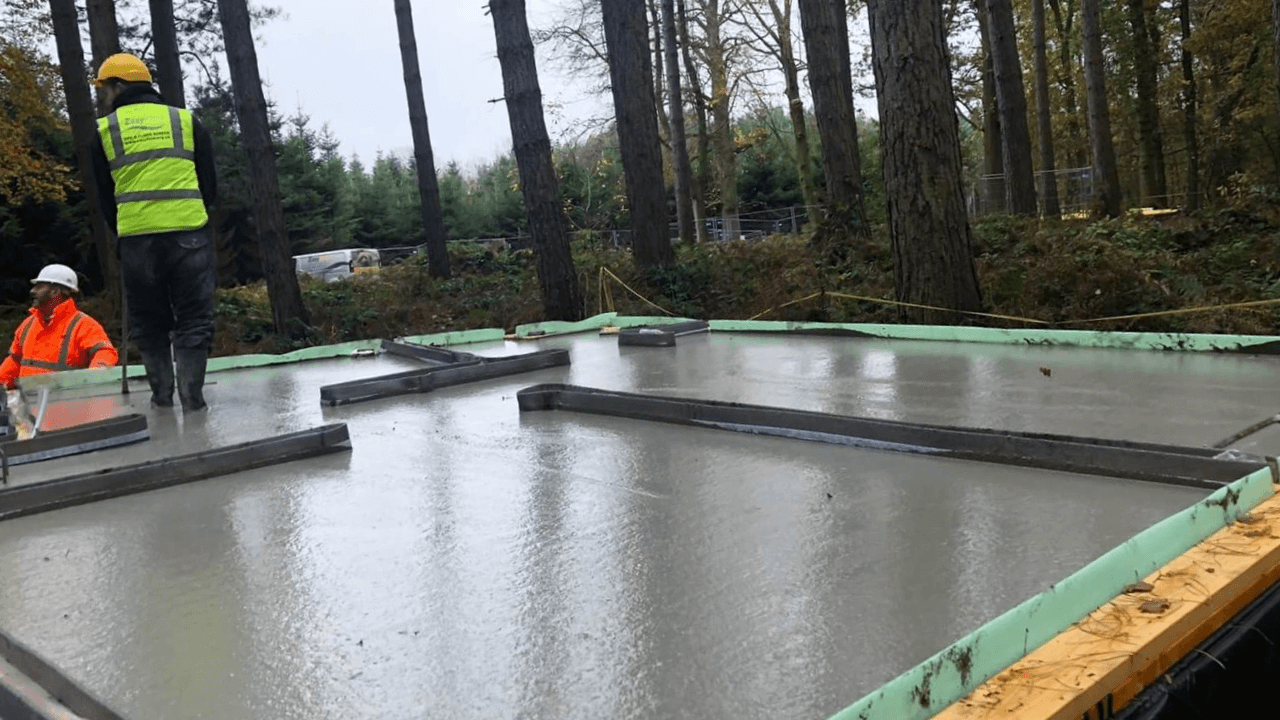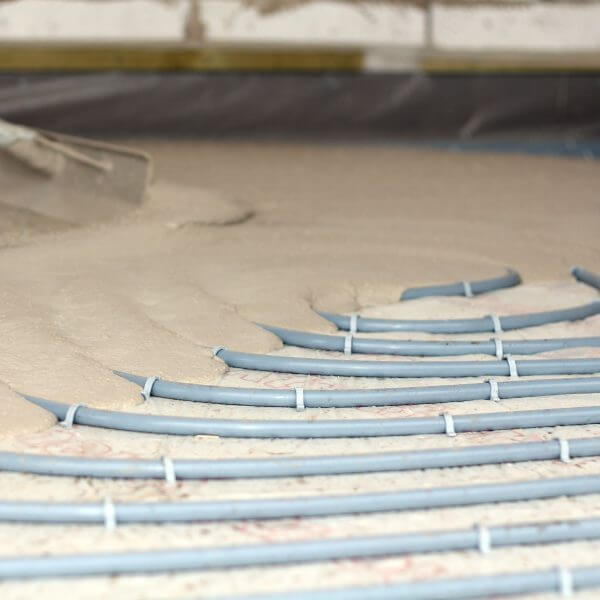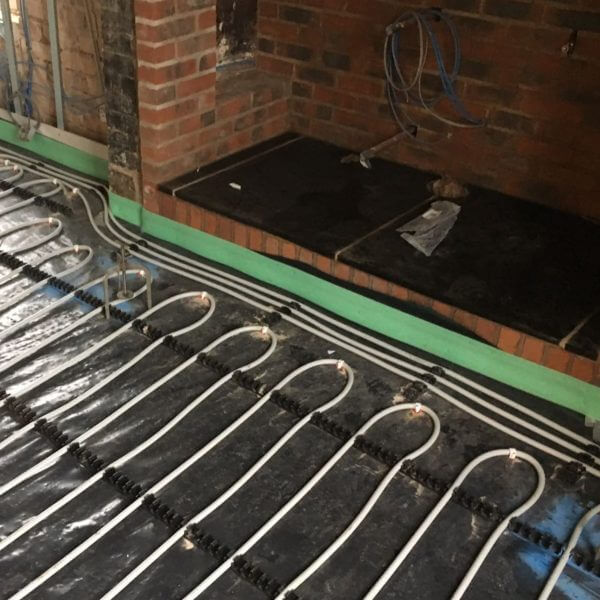Accelerate Construction with Early Underfloor Heating Installation
On many housing development projects, wet underfloor heating is often started when the building is weather-tight. This can cause delays in site progress, as liquid screed will need several weeks to dry completely before the next phase of construction can begin.
It doesn’t have to be this way.
At Easyflow, we have developed an alternative approach that allows construction companies and commercial businesses to accelerate their project with underfloor heating installed as soon as the foundational work is completed.
We have completed several underfloor heating Birmingham and Chester projects using this method. Most notable is our work in Delamere Forest, where we worked to rapidly complete the floor for 66 holiday lodges without a single wall completed. Read on, and we will take you through our early underfloor heating solution.
How Does Early Underfloor Heating Work?
Before work begins, our underfloor heating experts communicate directly with you, your architect, or M&E consultant at the earliest stages of the project. We will produce a tailored proposal, detailed CAD drawings, and calculations to ensure our involvement in your construction process is seamless.
For EasyFlow to begin laying underfloor heating, we typically require the foundations to be set in place and the ground floor build-up to be complete. This means the internal walls should be built up slightly from the foundation. This is because liquid screed is not suitable for walls to be built directly upon.
When these conditions are cleared, our team can be on-site to install the underfloor heating and apply self-compacting concrete. You can then focus on building the external walls and the roof while the floor dries, supporting with reduced site congestion and faster project timelines.
Limitations Of Early Underfloor Heating
While few, there are some limitations to this method to consider during the proposal phase of the project. Depending on how much the screed will be exposed to outdoor elements in the drying process, your choice of screed will need to take this into account. In cold and wet conditions, self-compacting concrete should be applied, as these are more weather-resistant. Until the building is fully weathertight, a polythene membrane will need to cover the screed to help facilitate the drying process.
If you have any other questions or concerns about installing underfloor heating early in your construction project, bring them up during the proposal, and we will be happy to tailor the solution around your suggestions.
Why Choose Easyflow For Construction Projects?
Unlike most contractors who only provide one solution at a time, Easyflow offers a complete and tailored solution to suit almost any project. We don’t just specialise in electric and wet underfloor heating, but floor insulation, liquid screed, and screed sanding. Our supply chain is optimised, ensuring minimal delays with each stage of installing underfloor heating.
Whether you require a wet or electric underfloor heating system, we will work to meet your project’s specific requirements, timeline, and budget. Talk to us in a free, no-obligation consultation to see how we can help.





Where To Find Us